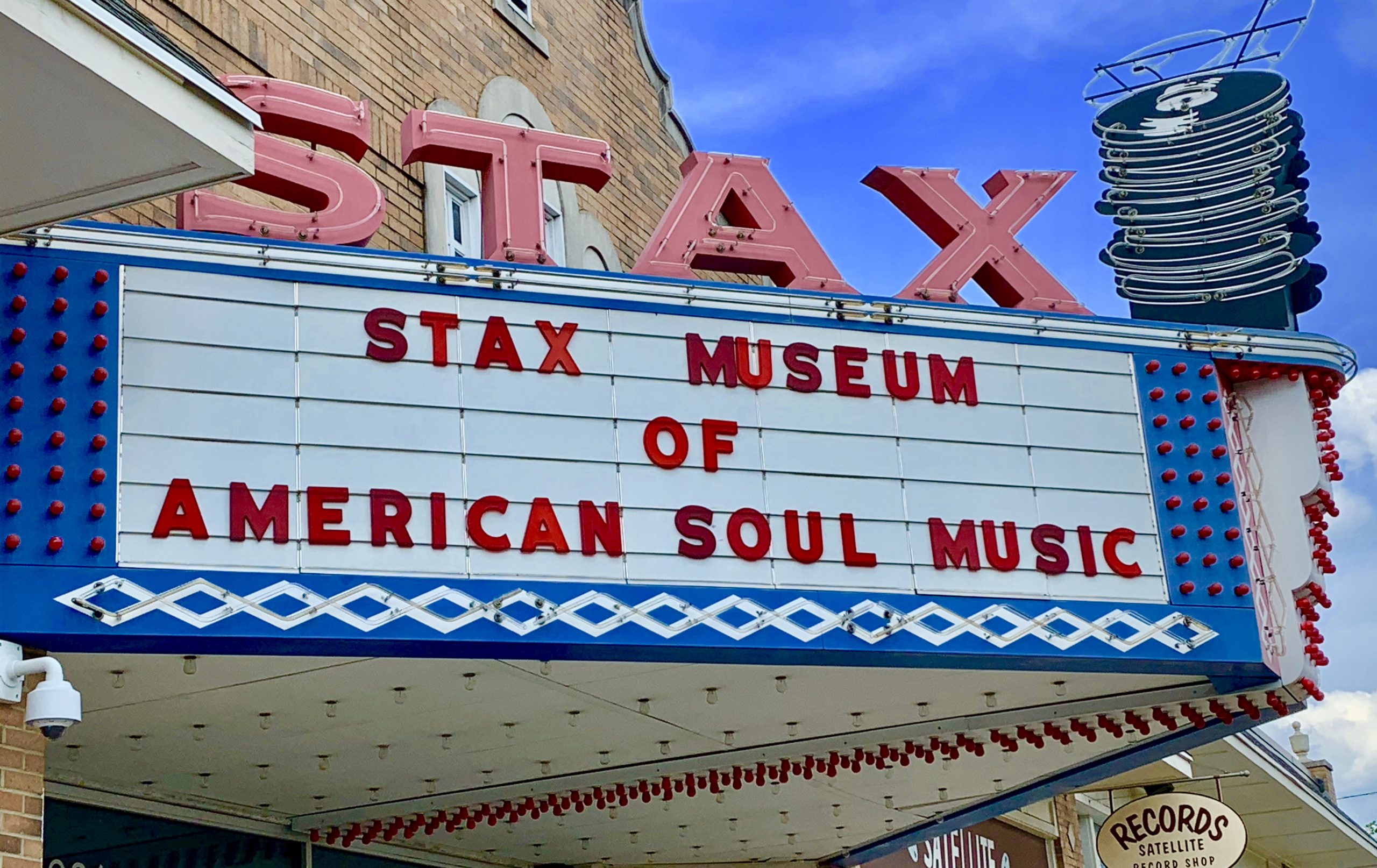By Ken Billett
On a warm Saturday afternoon in late May, my birthday week celebration came to an end at the Stax Museum of American Soul Music located in the Soulsville neighborhood of South Memphis. Vicki and I had not been to the Stax museum in many years—in fact, the last time we visited the museum was during the old Stax to the Max celebrations held on Sunday afternoons in late summer.
The Stax museum has been updated a few times since our last visit; as we pulled the car into the parking lot, the Soulsville campus that we saw was impressive, encompassing the museum, the Stax Music Academy, and The Soulsville Charter School. A reminder that rebirth and renewal are possible even in the toughest of circumstances.
The campus sits at the corner of East McLemore Avenue and College Street, not far from LeMoyne-Owen College and south of historic Elmwood Cemetery. This part of South Memphis has some of the richest music history in the world. The Memphis Slim Collaboratory is right across the parking lot on College Street. Just down East McLemore, on Willie Mitchell Boulevard, is Royal Studios, home to legendary Hi Records, which once featured soul sensation Al Green. Royal continues its soulful legacy to this day. Uptown Funk, Bruno Mars’ mega-hit, was partially written and recorded at Royal. Aretha Franklin’s birthplace is nearby on Lucy Avenue.
Soulsville is exactly right.
To immerse yourself in a tour of Stax Records—its past and its legacy—is to immerse yourself in the colorful, controversial, and complicated history of Memphis.
Heck, human history has always been complicated often controversial.
This is the South after all.
There’s a certain pride in reading the backstories of the Stax artists who were born in Memphis or who grew up in and around the MidSouth. The talent, energy, and desire that these women and men brought to Stax was incredible.
There’s also pride in listening to and loving the Memphis-based music that, in my younger years (early to mid-1970s), was simply known as R&B or Soul. Growing up in Tampa, Florida, one of my favorite music memoriesoccurred during the daily bus ride to middle school. The driver’s old battery-powered radio was tuned to a local top 40s station—this was long before album-oriented rock began the segmentation of popular music—and I’d tap out a beat with my hands on those green vinyl seats to songs by the Beatles, The Lovin’ Spoonful, Gladys Knight, Aretha, Sam Cooke, The Spencer Davis Group, and, especially, Otis Redding.
For Redding’s Dock of the Bay, however, I’d sing quietly to myself and occasionally catch the bus driver’s reflection in the mirror as she quietly sang along with Redding’s melancholy lyrics.
(Sittin’ On) The Dock of the Bay encapsulated everything about an era in Memphis music that’s now long gone. Otis Redding had one heck of a voice, and Dock of the Bay is one of those songs I’ll never grow tired of hearing. It became a monster hit after Redding’s tragic death, which unfortunately also became a significant part of the complicated history of Stax Records.
Look like nothin's gonna change
Everything, still remains the same
I can't do what ten people tell me to do
So I guess I'll remain the same, yes

The Hall of Records
All these years later (Man, I’m getting old!), I find myself in a hallway surrounded floor-to-ceiling with albums and singles from the Stax Records archives. This hall of records is a testament to the special—and, yes, complicated—legacy of Stax.
Little did I know back in middle school that I would eventually call Memphis my home. I’ve grown to love my adopted hometown with its grit and grind and its hustle and flow. I absolutely love telling people we live in Memphis. Everyone knows Memphis. Everyone knows its musical heritage.
And the history of Stax Records? Should be required learning (listening?) for everyone who calls the MidSouth home.
Memphis is in my heart, but Stax is in my soul.
Sittin' in the mornin' sun
I'll be sittin' when the evenin' comes
Watching the ships roll in
Then I watch 'em roll away again, yeah
Writer’s Note: This personal narrative was the third in the Birthday Week series. I wrote about three distinct events from the week of my birthday this past May. Each story represented how Memphis and the MidSouth have become deeply interwoven in my life.
As I wrote previously, growing older, our birthdays become a time of reflection, maybe even a time for revitalization. Now that I’m one month closer to being a senior citizen—a depressing thought—I believe I’m better able to put my Memphis-based experiences into their proper context. I hope you’ve enjoyed this time of reflection as well.
Ken Billett has called Memphis home for more than thirty years. A freelance writer, fiction author, and nationally known advocate for skin cancer prevention and research, Ken volunteers his time at the Blues Hall of Fame on South Main in downtown Memphis. When not tending to his flowers, Ken and his wife Vicki travel extensively.







